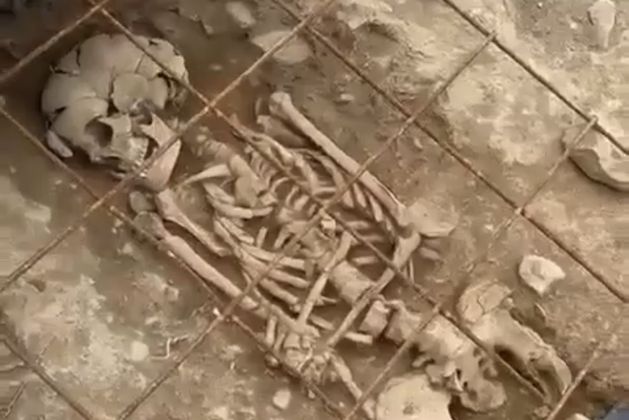World
Dig at medieval site in Dublin uncovers 32 human remains so far

Dublin City Council (DCC) is currently undertaking an archaeological excavation of the remains of a large double enclosure at the former De La Salle monastery and primary school site in Ballyfermot.
The excavation is being inspected by the council’s archaeology section bi-weekly, with the latest inspection taking place on June 17.
It has been reported by the archaeological team in DCC that initial evidence suggests the site was a cemetery settlement in use during the second half of the first millennium, which is around 500 AD to 1000 AD.
The land is currently in the middle of a large construction project, with Dwyer Nolan Developments Ltd building 839 housing units.
Work has paused several times over the last year as archaeological finds, including those of human remains, have been discovered, amid calls by local representatives and heritage groups for discoveries to be catalogued.
Thirty-two human remains have been discovered and lifted to date, with the council saying the next step for the team is to excavate and record the western half of the inner enclosure ditch and burial area.
The former De La Salle primary school in Ballyfermot, which closed in 2019. Pic: Mark Condren
Councillor Daithí Doolan was given the latest information following a question to the Chief Executive Richard Shakespeare on a report of the human remains and other historic artefacts found on the site.
“I have continued to raise the significance of this site. I contacted Dublin City Council several months ago, raising the issue and calling on them to protect and make the findings public,” he said.
“Every effort must be made to ensure a full excavation is carried out and everything of historical importance is documented and recorded. The local historic society must also be notified and included in the process.
“It is hugely important that the developers are not allowed to simply concrete over Ballyfermot’s history. This is local history, and it needs to be recorded, protected, and respected,” he added.
Extra security measures were put in place at the site in Ballyfermot late last month after videos circulated on social media showing people attempting to interfere with skeletal remains on the site.
A second video showed someone lifting a cover off the remains and touching its teeth.
The actions were criticised by local politicians and the National Museum of Ireland called for people to stop sharing and remove the video.










